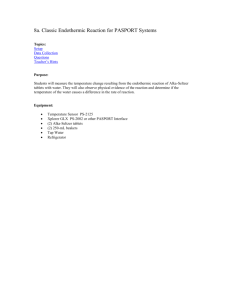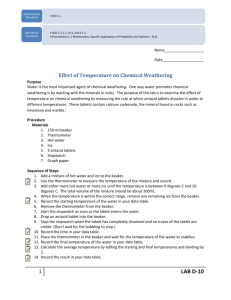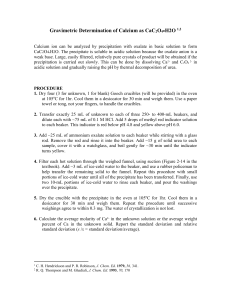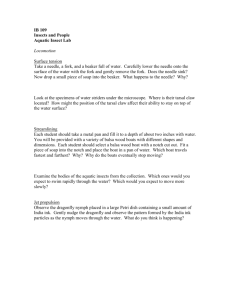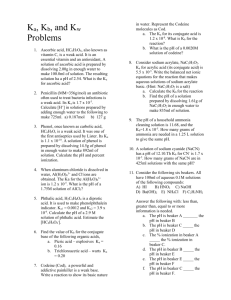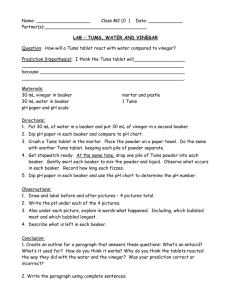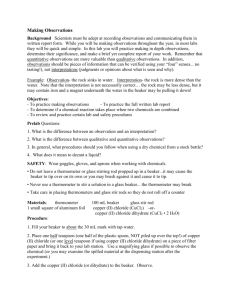Lab-Temperature and Chemical Weathering
advertisement
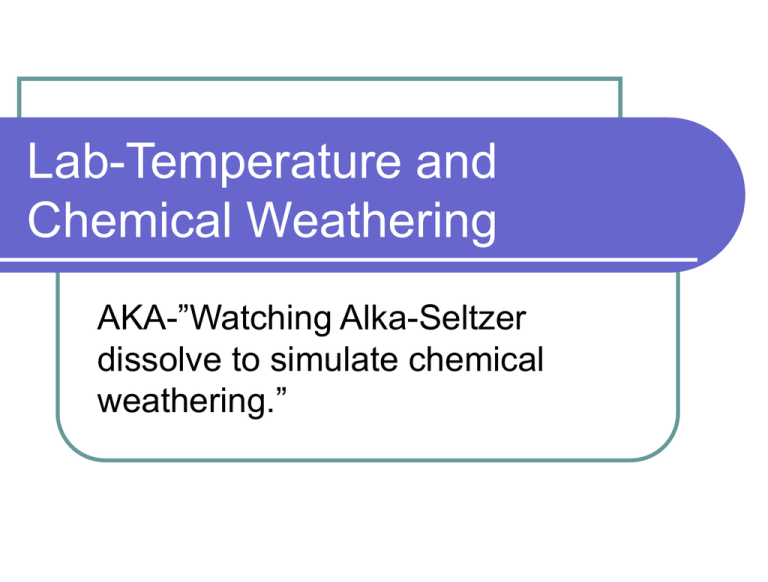
Lab-Temperature and Chemical Weathering AKA-”Watching Alka-Seltzer dissolve to simulate chemical weathering.” Data Table A NO UNITS IN THE COLUMNS! (That is standard for science data tables when the unit is as the top of the column.) All temperatures should be to the nearest half degree. All times should be to the nearest whole second. Data Table B Did you follow the directions? Beaker 1 data should be the same for each table (A and B) For the temperatures-10 added to Beaker 1 to get Beaker 2, that number is increased by 10 to get Beaker 3, and so on. For the times-Beaker 1 gets halved to get Beaker 2, Beaker 2 gets halved to get Beaker 3 and so on. (Did you round to the whole second?) The Graph Do you have the title? Do you have a label with a unit on each axis? Is temperature on the x axis and time on the y axis? Did you use small data points surrounded by a circle, square, triangle or diamond? Do you have a key since you had 2 data plots? Are the plots smooth curves? Labeled? The Questions 1a. Beaker 1 was the beaker in which the reaction occurred most slowly. Why? 1b. Beaker 5 was the beaker in which the reaction occurred most quickly. Why? 1c. The relationship shown is that as temperature increases the rate of reaction increases. Why? Questions continued… 2. Based on observations, as temperature increases it is likely that chemical weathering increases. Why? 3. The temperatures are possible but maybe not probable. What are the temperatures in F? Think about the highs and lows we have had on Earthweek since we began charting. Questions continued… 4a. A limestone should weather faster in Rio de Janeiro because the climate is hotter. 4b. More weathering would lead to more soil production so Rio would have thicker soil. 5. The climate in Barrow is cold and dry, which would slow down chemical reactions and lead to slower weathering rates. Questions continued… 6a. The rate of reaction would have increased if you ground the tablet into powder. This is because grinding the tablet increases the surface area making more surfaces available for the chemical reaction. 6b.The curve would be below the actual data curve because the reaction would have occurred in less time. Questions continued… 7a. The line for theoretical data is below the line for actual data. 7b.The difference in the plotting of the lines shows that the observed reaction was slower. 7c. One thing that would have made the actual results more like the theoretical results would be to grind the tablet. Were there sources of error in the experiment?

